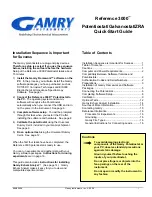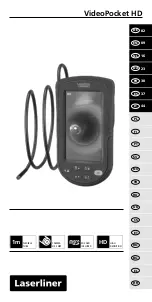
15
Workshop Manual
Smart Tachograph EFAS-4.10/4.11
Chapter 6
Installing and commissioning
This chapter describes how the EFAS tachograph is installed in a vehicle and how EFAS is put into operation. The main steps are
the activation of the tachograph and its pairing with a motion sensor.
6.1
Checks before installation
Prior to installation of the EFAS tachograph in a vehicle, check that the type label and the seal are intact. Any additional stickers
or labels must be checked as they might have been used to hide additional openings made in the course of illegal tampering. If
the check uncovers any discrepancies, the device must not be installed.
6.2
Handling during installation
The EFAS tachograph is intended for installation in normed bay conforming to DIN ISO 7736. This standard describes the
dimensions for a car radio bay known as the DIN slot.
Dimensions of the tachograph without connectors:
Table 5 — Housing dimensions
Dimensions
Width [mm]
Height [mm]
Depth [mm]
Housing dimensions excluding cover
179.1
50
175
Dimensions of cover
187.5
58
17.4
Open the DIN ISO 7736 bay in the driver’s cab intended for installation. If there is no standard bay present or free, an appropriate
attachment, mounting bay or bracket corresponding to the norm can be installed in the vehicle. This must be fitted in such a
way that the driver can see, read and operate the tachograph from the driver’s seat and so that the tachograph is not exposed
to direct sunlight.
Note
Please check to see whether plug connections are available for the tachograph or whether they must first be
installed.
6.2.1
Connector panel
The tachograph is connected to the vehicle’s electronic system via the connector panel at the back of the EFAS device. The
layout on the device can be seen in Figure 9, and the pin assignment of the plug connectors is described in Table 6 to Table 9
below.
Connector A
WHITE
WHITE
This plug connector is used to connect the power supply (vehicle battery, ground), the signal states IGNITION
and LIGHT (ON/OFF) and instrument panel or e-tachometer via the standard “A“ CAN bus.
Connector B
YELLOW
YELLOW
This plug connector is used to connect the power supply for the motion sensor pulse generator, the real-time
speed signal, the serial data connection to the motion sensor and the output signals “motion sensor pulse“ and
“4 pulse/m“ for the e-tachometer or the instrument panel.
Connector C
RED
RED
This plug connector can be used to connect the engine-speed input signal (used for additional data recording)
and/or additional devices via CAN Bus C, e.g. FMS, GSM or IR module. A terminating resistor for the CAN bus C
can be wired with an external jumper between terminals C7 and C8.
Connector D
BROWN
BROWN
This connector is used to connect the status signals D1 and D2 (used for additional data recording), the output
signal for external optical alarm displays and the data connection for the e-tachometer/instrument bus,
provided that this implemented over a K-line. In addition, the info interface is located on this connector panel.
It can serve, for example, to connect additional devices for fleet management tasks.
Plug-in fuse
The plug-in fuse integrated into the connector panel provides for a terminating resistor for the CAN bus A.
Ex-factory this fuse is plugged in, so the CAN bus A is terminated with 120 Ω. The fuse is a low profile MINI fuse.
It acts as a low-resistance bridge only, and so the nominal current value is unimportant.
Содержание Intellic EFAS-4.10
Страница 1: ...Powered by Workshop Manual Smart Tachograph EFAS 4 10 4 11 ...
Страница 2: ......
Страница 4: ......
Страница 6: ......
















































